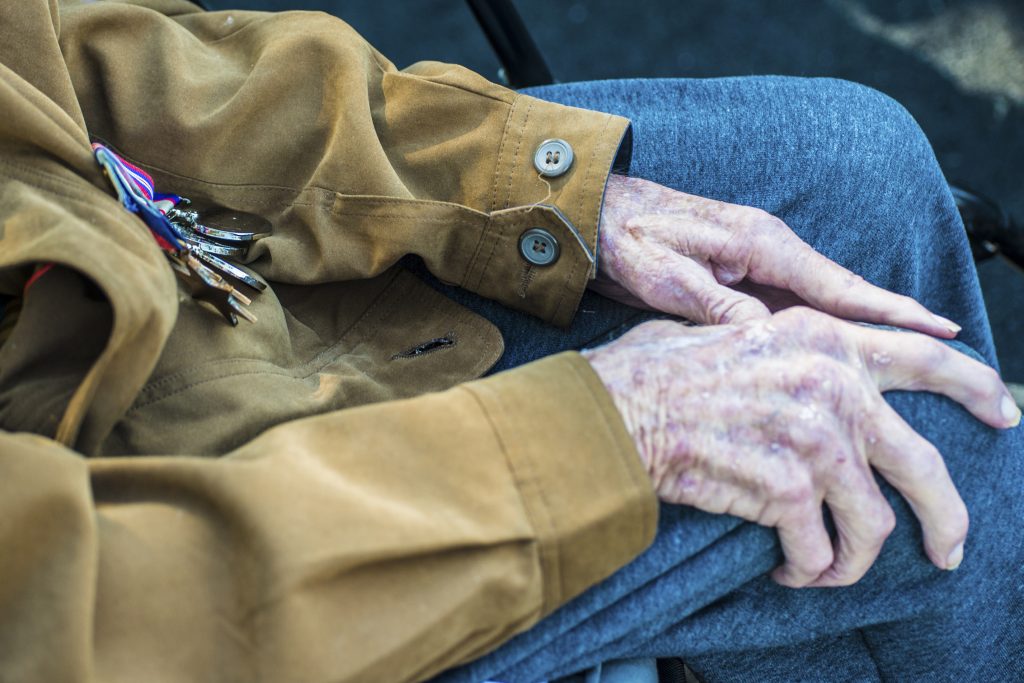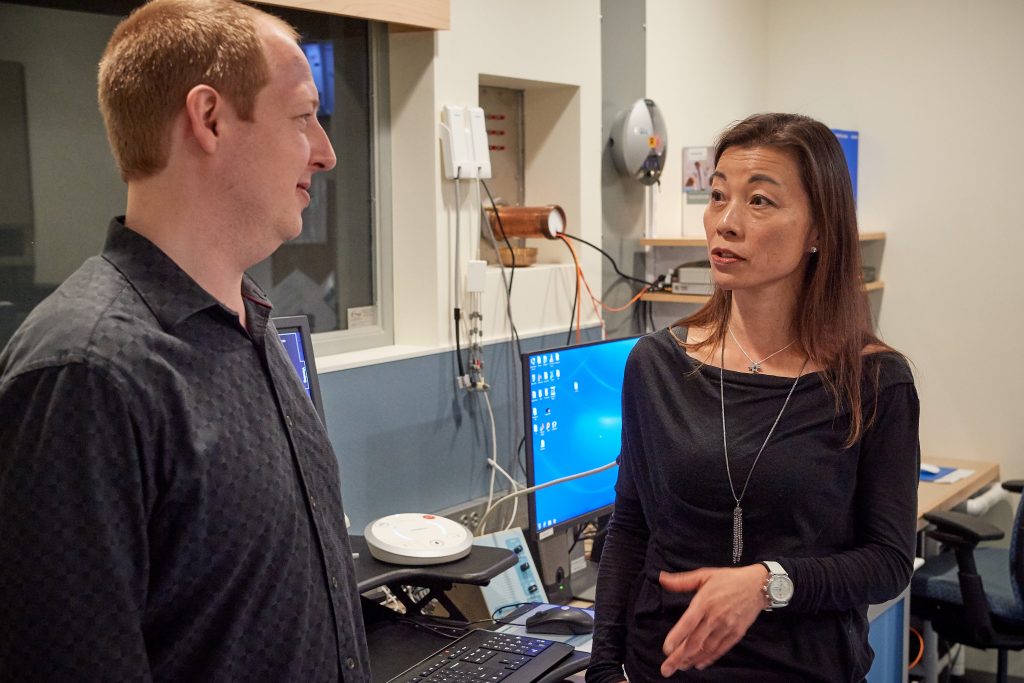
Writer
Kim Krieger
Kim Krieger has covered politics from Capitol Hill and energy commodities from the floor of the New York Mercantile Exchange. Her stories have exposed fraud in the California power markets and mathematical malfeasance in physics. And she knows what really goes on in the National Radio Quiet Zone. These days, Kim tells clear, compelling stories of the research at UConn. Her work connects Connecticut citizens and the press with the vast resources of their flagship public university. When not at UConn, she can be found kayaking among the beautiful Norwalk islands, digging in her garden, or occasionally enjoying the silence in the National Radio Quiet Zone.
Author Archive
The Blitz of Neuroscience
UConn neuroscience researchers from across departments and campuses came together this week for a "datablitz," where several graduate students presented fast-moving summaries of their research to a live audience.
October 30, 2018 | Kim Krieger
Suicide Risk Higher Among Older Vets Who Were in Jail
Veterans released from prison are five times as likely to attempt suicide as their peers who have never been incarcerated, according to a study by UConn Health researchers.
October 29, 2018 | Kim Krieger
Old Drug, New Hope for Pediatric Brain Cancer
Researchers from JAX, Connecticut Children's Hospital, and UConn Health have identified several drugs used against other diseases that also have the potential to fight the most common form of childhood brain cancer.
October 25, 2018 | Kim Krieger
A Copper Bullet for Tuberculosis
In a new study, UConn chemists report a new antibiotic that can find and kill tuberculosis bacteria where they hide.
October 23, 2018 | Kim Krieger
Calm the Immune System, Halt Premature Birth
UConn Health researchers found that a drug that blocks the cytokine GM-CSF may reduce the number of preterm births.
October 12, 2018 | Kim Krieger
Cell Death Protein also Damps Inflammation
A new study by UConn Health researchers shows how the body keeps inflammation in check, making double use of a protein previously thought to be responsible only for cell death.
October 1, 2018 | Kim Krieger
When More Bone-making Cells Equal Less Bone
Researchers at UConn Health have shown how a mutated gene causes excess bone resorption in a rare bone disease known as Lehman Syndrome.
September 7, 2018 | Kim Krieger
In Dyslexic Children, Brain Features Can Predict Reading Comprehension
The amount of gray matter in a kindergartner’s brain can predict whether she will have trouble with reading comprehension as a third grader, according to UConn researchers.
August 30, 2018 | Kim Krieger
Ovarian Cancer Cells Hoard Iron to Fuel Growth
Researchers at UConn Health have found that iron may be playing a critical role in increased fatty acid synthesis in cancer.
August 15, 2018 | Kim Krieger
Synchrony Keeps the Beat
UConn neuroscientist Ed Large built a model of the brain that can predict the future. And then he taught it to dance.
August 13, 2018 | Kim Krieger









